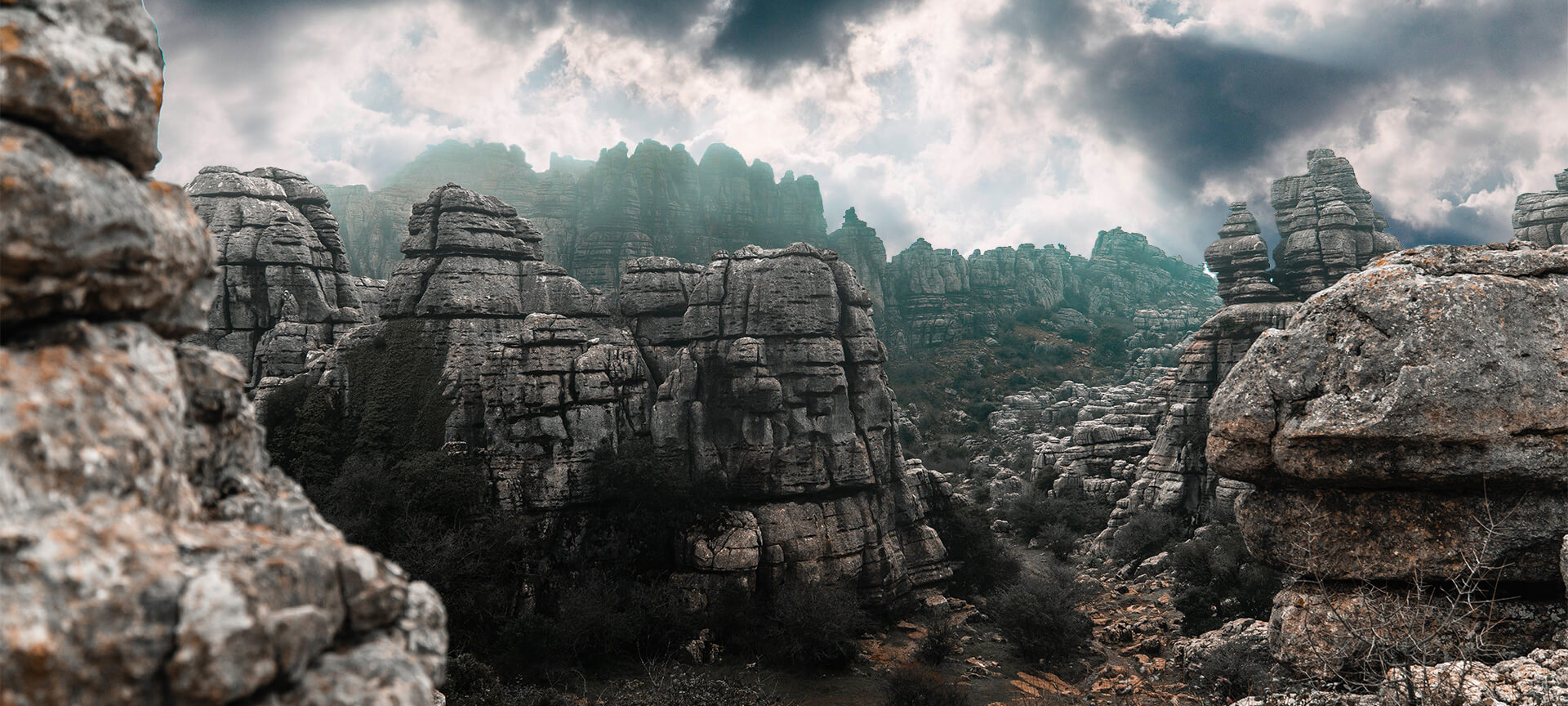
Torcal de Antequera Nature Area

One of the best examples of a karst landscape in Europe.
El Torcal, declared a World Heritage Site by UNESCO, is located between the city of Antequera and the municipality of Villanueva de la Concepción. Its main feature is its impressive landscape formed over 200 million years ago, and its abundant fauna and flora.
Strolling around El Torcal is like taking a journey into the past, as its rock formations are the result of processes that took place million years ago. This nature area is populated with abundant vegetation and is home to valuable wildlife such as golden eagles and foxes. In addition, this natural area is perfect for hiking or sports activities such as cycling or climbing.
Torcal de Antequera Nature Area
Torcal Alto Visitor Centre
Entre Antequera y Villanueva de la Concepción, único acceso para vehículos, km 43 de la A-7075
29200 Antequera, Malaga (Andalusia)
Activa JS
What you need to know
-
Cultural information
The human presence in El Torcal dates back to prehistoric times. Some of the archaeological sites are the cave of La Cuerda, Marinaleda and Sima del Hoyo, and others on the surface such as Hoyo del Francés, Hoyo del Tambor and Fuente de la Higuera. Remains of Roman and Arab origin have also been found. The last known settlement was Las Sepulturas, in the last century.The Dolmens of Antequera lay close to this nature area. They are one of the most important prehistoric architectural complexes in Europe and have been declared a World Heritage Site by UNESCO, along with El Torcal and another nearby natural site, Peña de los Enamorados.
-
Environmental information
The main plant communities in the nature area –according to their botanical classification– are rock plants, grasslands and scrub. One of the most widespread species is ivy, which grows abundantly in El Torcal Alto.The fauna features numerous birds. Griffin vultures are among the most commonly sighted species in El Torcal, along with black and black-eared wheatears, eagles and other owls, kestrels and a number of smaller birds. Among the reptiles to be found here are the ocellated lizard, the large psammodromus, the Iberian lizard, the ladder snake, the Montpellier snake and the snub-nosed viper. Among the mammals, the most representative species are the vole, the fox, the badger, the weasel and the rabbit.
-
Information for visits
The Torcal Alto visitor centre is located in the middle of the area, but can be reached by car. It includes several rooms, from those dedicated to showcasing the natural assets of the site to a café-restaurant and a souvenir shop. Private vehicle access is limited on peak days with a large number of visitors (such as weekends, public holidays, and more), but you can hop on the low-cost shuttle bus that takes you to the centre. There, for example, information is provided on the three signposted routes through El Torcal.
Travel plans for inspiring you




